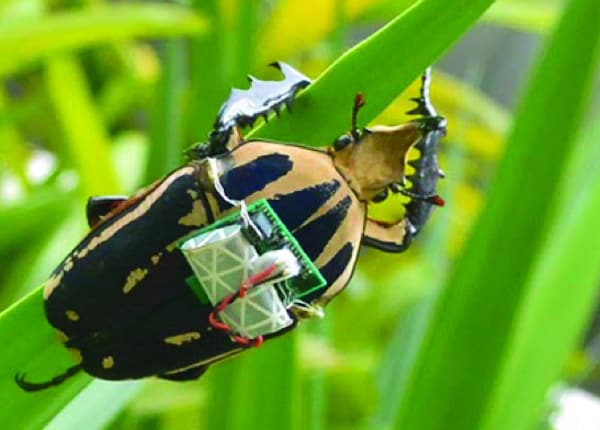The team - from the Universities of California, Berkeley and Singapore’s Nanyang Technological University - strapped tiny computers to the back of giant flower beetles in order to record neuromuscular data during flight.

During test flights, the researchers were able to determine that a muscle known for controlling the folding of wings (the coleopteran muscle) was also critical to steering. They then used this information to improve the precision of the beetles’ remote-controlled turns, by transmitting signals to the “beetle backpack” that prompted the insect to take off, turn left or right, or even hover in mid-flight.
The backpack itself is made up of a tiny, off-the-shelf microcontroller and a built-in wireless receiver and transmitter. Six electrodes are connected to the beetle’s optic lobes and flight muscles. The entire device is powered by a 3.9-volt micro lithium battery and weighs 1 to 1.5 grams.
This authors of the study, published in Current Biology, claim that the research could also lead to applications such as tools to aid search-and-rescue operations in areas too dangerous for humans.
‘We could easily add a small microphone and thermal sensors for applications in search-and-rescue missions,’ said Hirotaka Sato, an assistant professor at NTU’s School of Mechanical and Aerospace Engineering. ‘With this technology, we could safely explore areas not accessible before, such as the small nooks and crevices in a collapsed building.’




Glasgow trial explores AR cues for autonomous road safety
They've ploughed into a few vulnerable road users in the past. Making that less likely will make it spectacularly easy to stop the traffic for...